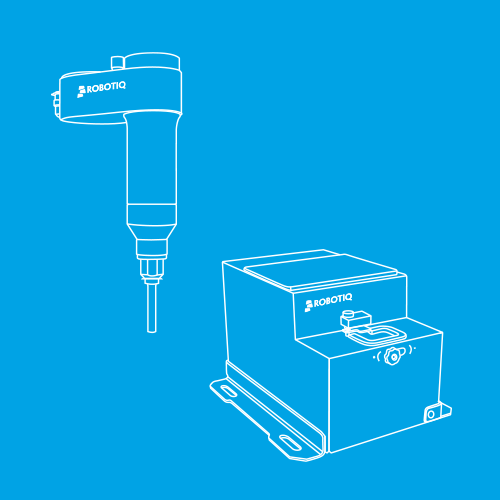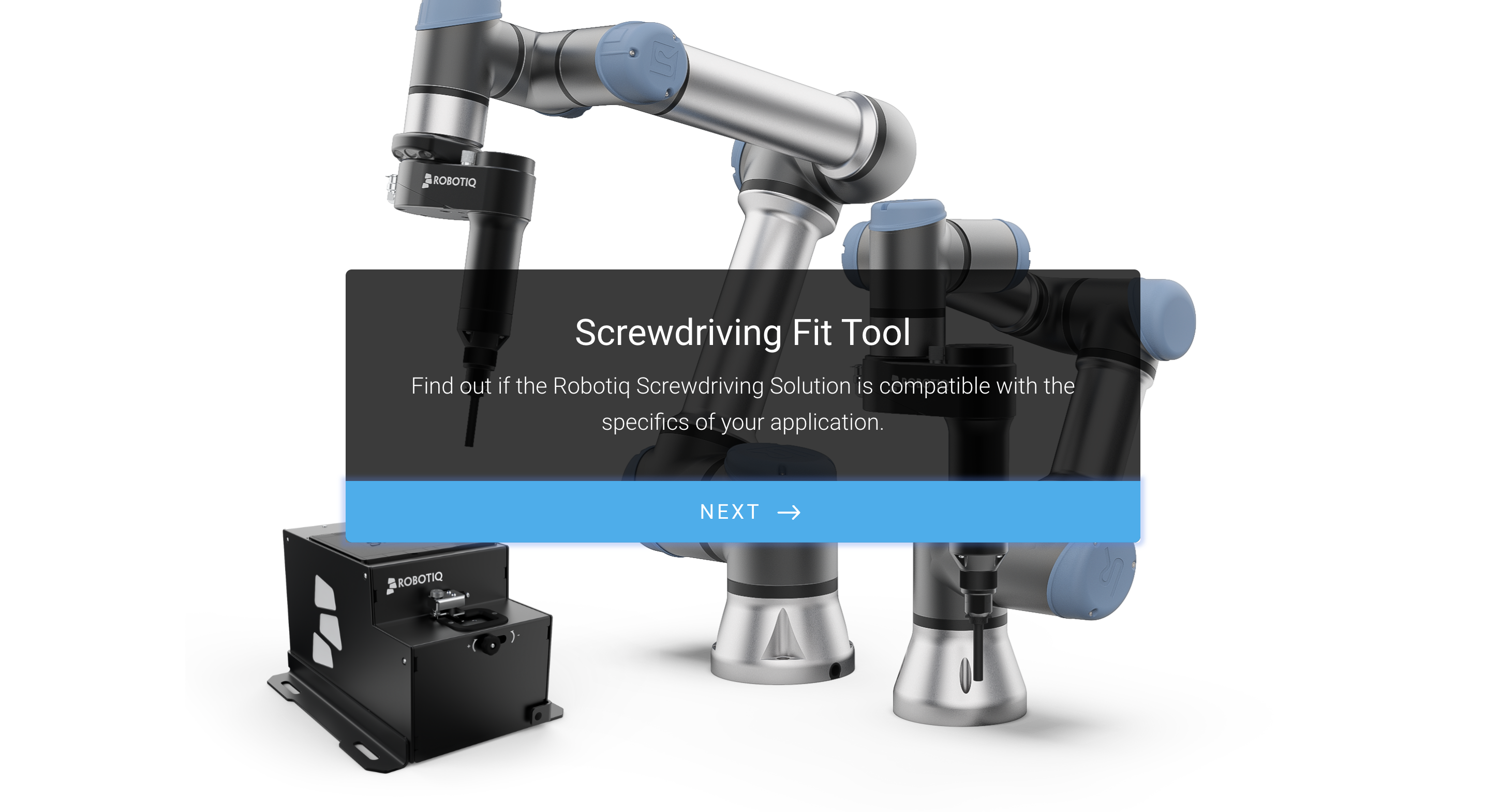Robotiq Screwdriving Solution
Topic outline
-
-
Solution Highlights
Get a glimpse of how the Robotiq Screwdriving Solution can help you automate your robotic tasks faster!
-
Free workers for higher-value tasks
-
Reduce labor cost
-
Reduce injuries
-
Improve product quality
-
Automate easily, without a huge investment
-
Intuitive to deploy and duplicate
What’s in the box?

-
Robotiq SD-100 Screwdriver
-
Robotiq Screwdriver screw kit
-
Robotiq SF-300 Screw Feeder
-
Robotiq Screw Feeder screw kit
-
Screw Feeder mounting brackets
-
Screwdriving bits
-
Vacuum sleeves
-
10-meter pneumatic hose
- Manometer
-
Robotiq device coupling
-
RS-485 to USB signal converter
-
10-meter High-flex device cable
-
Screw Feeder power supply cable
-
Screw Feeder cable for I/O signals and ground
-
USB A-Male to USB B-Male cable
-
Hardware and tools
-
FT 300-S Standard Kit (CB-Series only)
-
Robotiq Force Copilot license dongle (e-Series only)
-
International power adapter kit
-
-
Using the Screwdriving Fit Tool
Find out if the Robotiq Screwdriving Solution is compatible with the specifics of your application.

All you need:
-
The process you want to automate with the Screwdriving Solution
-
Screw type
-
Screw drive
-
Screw head shape
-
Screw size
-
Screw length
-
-
-
-
Let’s start with the installation of the Screwdriver! Watch the video to learn how to:
- Mount the coupling onto the robot arm.
- Mount the Screwdriver onto the coupling.
- Wire the pneumatics.
- Select the screwdriving bit that corresponds to your application.
- Attach the vacuum sleeve to the coupler.
Screwdriver Installation
Nice work! Now, you need to install two URCaps, Screwdriving URCap, and Copilot URCap. The process is simple, follow this step-by-step tutorial!
Software Installation
Now that you’ve installed the Screwdriver and the necessary URCaps, let’s set up the tool and make sure the bit holder is well adjusted.
Screwdriver Setup
-
-
-
The Screwdriver is all set. It’s now time to install the Screw Feeder!
During the process, we recommend respecting these four good practices:
- Place the Screw Feeder on a flat work surface.
- Make the provided mounting brackets close in on both sides of the Screw Feeder to secure its position.
- Make sure the device stands on its shoes (rounded rubber pads) on the work surface.
- Make sure the device is level, horizontally.
Screw Feeder Installation
Now that the Screw Feeder is installed and sits steadily on the work surface, it's time to perform four simple adjustments:
1. The screw singulator.
2. The rail.
3. The brush.
4. The screw head clearance.
Screw Feeder Setup
Your Robotiq Screwdriving Solution is now up and running!
-
-
-
Ready to go? You'll see, the Robotiq Screwdriving URCap makes it really simple to use.
Watch this demo from Mathieu Bélanger-Barrette, Application Expert at Robotiq.
-